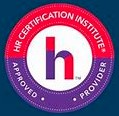Supervisor/ Manager's Accountability and Responsibility for Employee Safety and Health
Duration : 90 Minutes

This course, has been approved for 1.5 HR (General) recertification credit hours toward aPHR™, PHR®, PHRca®, SPHR®, GPHR®, PHRi™ and SPHRi™ recertification through HR Certification Institute® (HRCI®).
JOHN J. MEOLA,
John J. Meola is a Certified Safety Professional (CSP) and holds an Associate in Risk Management (ARM) He has a BA in Education and is an Instructor at Virginia Commonwealth Uni Read more
Running any business enterprise is tough enough on a good day.
There are about 32.5 million small businesses in the US, which account for 99.9 percent of all US businesses (SBA, 2021).
The Small Business Administration (SBA) defines a small business as a firm that has fewer than 500 employees. This metric will be the focus of our discussion. And that’s a big number
How a business or organization approaches the treatment of it’s employees is a critical process. Supervisors – or anyone with direct control over the actions of employees – must clearly understand their responsibilities. They are accountable for carrying out the policies and procedures as defined by senior management.
They are the dividing line between ‘The Company’ and the employees. They are viewed as agents of the Company, and as such must represent the face of management in the eyes of employees.
This is often a complex mix of personalities and group dynamics, with the recent addition of social media and ‘influencers’. The old paradigm of ‘I’m the boss, you’re the worker’ has shifted, in light of external forces having nothing to do with your business processes. The ‘Gig Economy’ has created an alternate view of how employees think and perform.
The advent of a resurgent labor movement has also compounded the requirement for having supervisors on board with the company culture. They are viewed as representatives of monolithic, faceless ‘Corporate’ management.
Creating a bridge at this dividing line is part of the supervisors role. They should understand that whatever they say to an employee is immediately interpreted as ‘Company Policy’. There are several Do’s and Don’ts associated with crossing this bridge. We will discuss these and other bridge ‘crossing points’ in our webinar.
Course Outline:
• Define the concept of ‘ Supervisor as Agent’ of the Company .
• OSHA – ‘Employer’ requirements examined as a guide to Best Practices
• The Job Offer – conditional, probationary, Temp to Perm
• Progressive Discipline and Re-directive Counseling
• Why having a formal Safety and Health Program is critically essential
• Importance of detailed and Current Job Descriptions
• Pre-Hire Medical Screening; Drug Testing; Functional Capacity Exams
• Employee Wellness Programs
• Early Return To Work Policies
• Company Policy vs. Job Practice and Tolerance
• Temporary, Contractor and Part-Time Employees
• ‘Temp to Perm’ arrangements
• The Group Dynamic
• The Alpha Employee
• Leaders vs. Managers
• Internal Company communications – how to get your message out
• Supervisor development programs
• Employee development
• Employee safety practice ‘malfeasance’ and accountability
Course Level - Basic to Intermediate
Why Should You Attend
Attendees will learn ‘what you’re up against’ in today’s work environment. This is often not as simple as it was a few short years ago.
‘Supervisors Responsibility’ covers a wide range of human interactions. Since the employer-employee relationship is the dividing line of who does what, it is incumbent on the employer to properly define and fulfill their responsibility.
The concept of ‘agency’ is the operative term for the function of supervisors. We will explore the role of the employers ‘agents’ and examine Best Practices for helping you achieve the best outcome in running the business.
We will discuss a range of direct and tangential areas of responsibility, since many supervisors and managers wear multiple ‘hats’. Understanding the order of prominence among these designations is highly important.
The benefits of having a well defined process for supervisor selection, promotion, development and incremental responsibility will be discussed. The down-side of doing little or nothing with supervisory engagement will also be discussed.
Who Will Benefit:
Human Resources; Plant Managers; Line Supervisors; Attorneys, Workers Comp Insurance Claims Adjusters, Insurance Agents and Brokers; QA/QC persons; Management Consultants; Small Mom and Pop firms; Working Lead Persons; management consultants; CEO’s, Company Officers and Directors; Plant and Production Managers; line supervisors, Regional Managers, Department heads.
Topic Background
Engrained into the US work culture is the direct and unrelenting responsibility of ‘The Employer’ for assuring the well-being of their employees. This concept has been microscopically defined over the years in Tort Law and Professional Liability cases, at the federal and state levels.
This concept of organizational responsibility is heavily reinforced by US Government agencies, notably the Department of Labor. There are defined penalties for non-compliance- for example in the ‘Anti-Discrimination’ Whistleblower, Anti-retaliation language on the OSHA Poster.
This concept of responsibility is also embodied throughout the fabric of society. More so now than ever before thanks to Social Media, Influencers, digital avatars, etc. The work environment itself has changed, with tele-work and Virtual Meetings now replacing the water-cooler/Conference Room.
Most large companies devote entire departments and a few Vice Presidents to detailing the role of a ‘supervisor’. The role and responsibility of the employer has morphed over time into something akin to ‘Adult Daycare’, like it or not.
This webinar will look at some of the most prominent operative factors in this equation, and define the norms in the Responsibility and Accountability architecture of management, namely the Supervisor.
Because most business in the US is classified as ‘small business’, very often the luxury of having a system or process for supervisory selection and development is informal, at best. We will describe some of the easiest and most effective ways to bring a supervisor up to speed on their responsibilities. Some of these techniques are surprisingly simple.
Please reach us at 1-888-844-8963 for any further assistance or if you wish to register

